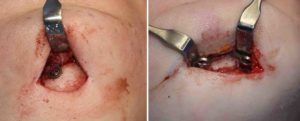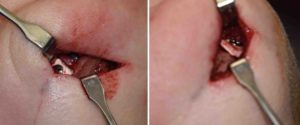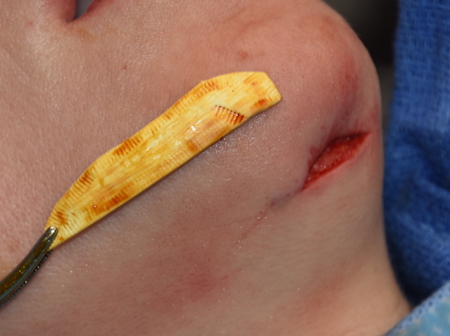Background: The chin is a jutting facial feature that has three distinct dimensions. Horizontal projection, vertical height and transverse width are all chin features that can clearly be discerned. Because it is a protruding 3D structure, changing one of the dimensions will visually cause a change in the other ones. For example if the chin is made vertically shorter it will appear wider. Conversely vertically lengthening a chin will make it appear more narrow.
In chin reduction surgery all three dimensions are commonly changed for various types of macrogenia. Protrusive chins are horizontally reduced. Vertically long chins are shortened. And wider chins, often as part of a v-line surgery, can be narrowed. In most chin reduction surgeries almost always more than one dimension is changed.
Case Study: This female had a prior sliding genioplasty which left her feeling that her chin was too far forward and long. She underwent a subtotal sliding geniopalsty reversal which helped but still left her feeling it was too vertically long and too narrow. The key issue on her chin width is that she liked best when the early swelling after surgery was still present.


It is not common that a female wants her chin to be wider as it is shortened. It is far more common to have a request to make the chin less wide as it is vertically shortened. But using her swelling immediately after prior chin surgery as her preferred look confirmed that such added width is needed.
Case Highlights:
1) Chin reshaping often involves multidimensional changes .
2) Vertically shortening the chin visually also makes it look wider.
3) Ensuring that the shortened chin becomes wider can be done by adding onlay implants out laterally to cover the prejowl area.
Dr. Barry Eppley
Indianapolis, Indiana




